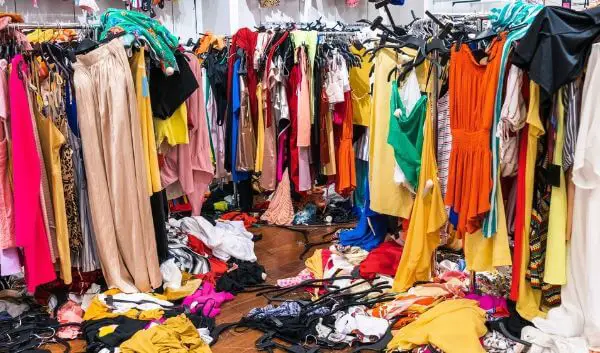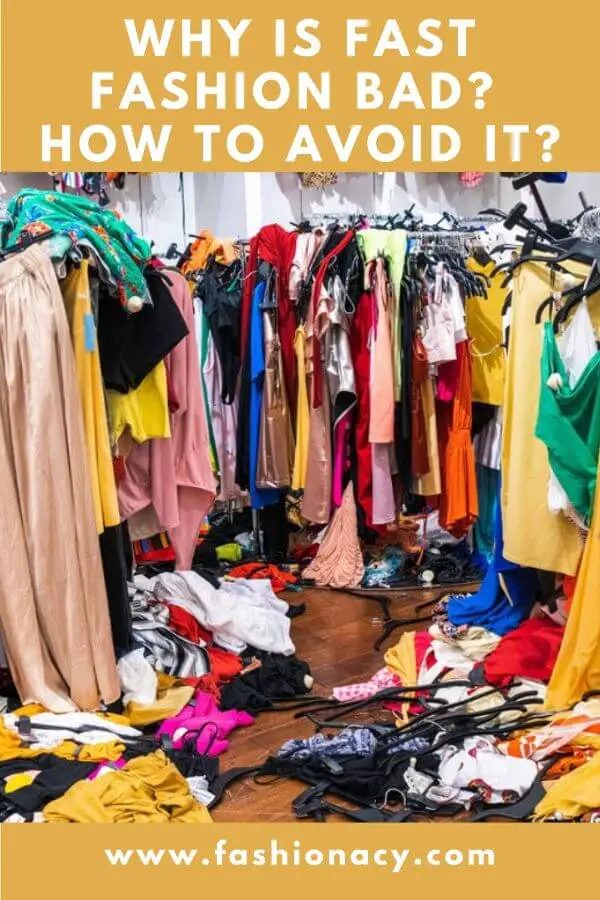
People have erroneous ideas about fashion, how to put together a wardrobe, how long a “new trend” should last, and how much an item of clothing should cost.
All of this is the product of fast fashion brands’ impact.
This article will focus on fast fashion.
I’m going to talk about what “fast fashion” means, how to define it, and what’s behind it.
I’m going to investigate the company model in question. I’m going to look into what you, as a consumer, can do to break the cycle.
What is Fast Fashion?
Brands like H&M, Primark, Forever21, Topshop, Zara, and others come to mind when you think of fast fashion. That is only a partial list; there are many others.
What is it that they all share in common?
They are makers as well as retailers, and they are in charge of the entire process from design to consumer.
This enables for exceptionally short rotation cycles from the start of the process, which is the design concept, through the appearance of the clothes on store shelves.
The cycle lasts between two and four weeks. Each year, 12 to 24 collections are made.
To achieve this level of speed, they optimize every step: textiles, design, sewing, and quality. Everything must be sourced and completed at the lowest possible cost.
When it comes to humans, labor is another parameter that is “optimized.” How far can the folks who create your clothes be pushed? Is that wage a legal requirement, or can we get past it?
Then, in most cases, the price tag in stores is really low. H&M usually has tank tops for less than five to ten dollars, but this isn’t always the case.
Zara is an example of a fast retailer that is also wiser than the competition. You can walk out of Zara’s store with a shirt or piece of clothing that costs $100. It isn’t of higher quality, but the profit margin is ridiculously high.
Fashion merchants create fashionable clothing, which is the most significant aspect of what fast fashion entails.
Every two weeks, they produce fashion that will be out of style in two weeks.
Because when you walk into a store and see the clothes, you feel compelled to buy them right now because they won’t be there in two weeks, creating a sense of urgency.
However, what you bought two weeks ago will be out of fashion in two weeks. So, fast fashion refers to how quickly anything you buy today will go out of style.
The Business Strategy of Fast Fashion
Let us now turn our attention to the business strategy.
They must cut everywhere they can to achieve a basis of 12 to 24 collections per year.
The design of fast fashion brands is slashed. They don’t have a dedicated design team. They just imitate the work of ready-to-wear designers.
It takes a long time for a design to form and become definite. It’s a methodical procedure. Copying is a lot faster.
So let’s just copy at the intellectual property’s edge.
Then, in order to lower the unit cost, they make large amounts of clothing. They pre-produce everything in massive quantities, far beyond their expectations.
This is because the two- or four-week cycle is so fast that if an item sells well, they don’t have time to duplicate it in order to replenish the stores. So they just mass-produce everything and throw the rest away if it’s too much.
They manufacture in nations with cheaper labor and weaker enforcement of safety and ethical human rights legislation.
I’m not trying to insult anyone, but I’m going to mention a few countries. China, Vietnam, Cambodia, India, and Bangladesh, for example.
For the European market, these are well-known producing countries. They wouldn’t necessary ship it over from Asia for the American market. They’d work with Bolivian or Mexican producers.
In actuality, “Made in Country X” on a label simply refers to the country where the item was most recently altered. It does not imply that the history of the garment’s manufacturing process began in that country. Everything that occurs prior to the last country is completely opaque and does not require labeling.
For example, if you buy the fabric in one nation, the thread in another, the label in still another, the garment is assembled and sewn together in a fourth country, and then packaged for retail or shipping in a fifth country.
That is how efficient the procedure may be.
Because everything is so inexpensively created and sourced, you as a consumer wind up buying a piece of clothes that is worth less than what you paid for it.
Despite the fact that the pricing is so low. It’s not worth the money you’re spending on it, and you have no idea where it’s coming from.
Fast fashion has the odd side effect of making you shop for clothes like you would for groceries. The kick you receive from purchasing a piece of apparel is comparable to the kick you get from purchasing milk. Is it really that high?
Objections
I’m already sensing questions and objections from the audience, so let’s address those first before moving on to suggestions for how you might adjust your behavior as an individual to aid the problem.
Do I shop for fast fashion on my own?
It’s something I’ve done before. I wore roughly 20% of my clothing on a regular basis. I even had products with price tags still attached to them.
I don’t do that any longer, and my closet is getting smaller by the day.
Furthermore, as a fashion designer, I have a slightly different viewpoint on the subject.
My heart would break if I saw my clothes being sold for $5.
As a result, I don’t want to act like that as a consumer.
What Can We Do to Help Fast Fashion?
Now we’re getting down to business.
You, as a single person living somewhere on the earth, can do something to help transform that thinking and propel that industry forward.
The first step is to quit seeking for trendy items that you know will be out of style next month, such as those found in fast fashion retailers.
Instead, search for products that are sleek, basic, and classic. Those are the characteristics of something you’ll want to wear ten years from now.
If a specific style fits your personality not just today, but also ten years from now, it’s suitable for you and you should purchase it.
A second sensible move is to look into thrift stores, secondhand stores, and online apparel swapping sites.
You’ll get a great outfit that has already been worn by someone else, but the quality is far better and the pricing is considerably lower than a brand new item from a fast fashion retailer.
Next, while you’re shopping for clothes, search for that white label with a lot of writing, and look for the country of manufacture. Don’t buy from a place where you know the working conditions are poor and children are occasionally exploited.
Drop those countries; there are plenty of others to choose from, and they’ll provide a better experience.
Continue your investigation into this topic to gain a better understanding of what’s going on. How the entire supply chain and industry function, so you can become more knowledgeable about it and make more informed decisions about how you shop for yourself and create and manage your wardrobe.
How to Avoid Fast Fashion
Think about project 3-33. It’s all about limiting your wardrobe to 33 pieces for a season.
For example, 33 for the summer and 33 for the winter.
Because you’ll be washing and wearing each piece a lot more than you’re used to right now, you’ll be forced to choose only clothes that go with everything else you own and are of extremely excellent quality.
And you’ll be forced to buy only items that truly reflect your personal style and those you know you’ll want to wear nonstop for the next six months.
It also aids in the discovery of your personal style. The outcome is known as the capsule wardrobe.
Finally, it is an extremely significant topic because fashion affects everyone.
So, if this article makes you think, even for a second, about how the behavior industry works and your own shopping habits, then I’ve done my job.



